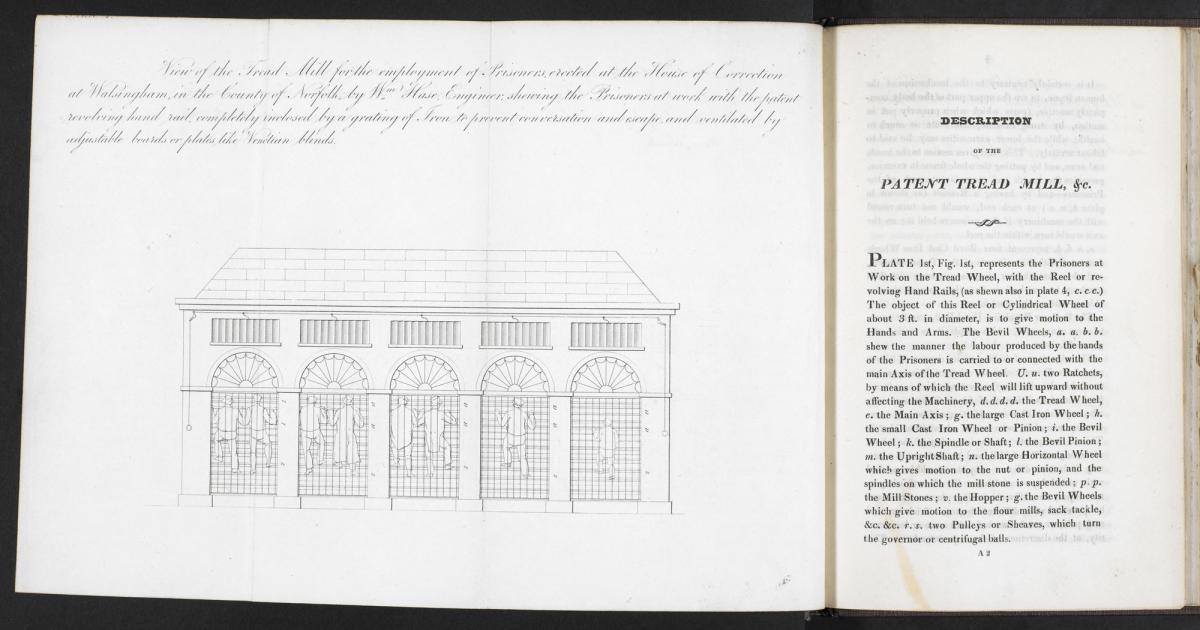Although we associate treadmills with fitness and gym culture today, the treadmill was used as a form of punishment in the nineteenth century. Invented in 1818 by William Cubitt (1785-1861), the treadmill was designed as a human powered device for grinding corn, and was not initially intended as a mode of punishment. It did not take long, however, for major prisons to adopt the device as a mode of "hard labor" that would render inmates productive to society. As the British Library explains, "The Society for the Improvement of Prison Discipline considered it a form of 'preventative punishment', reasoning that nobody who had been exposed to it would ever risk reoffending."
This drawing was published in a pamphlet by William Hase in 1824. It's full title is, "Description of the Patent Improved Tread Mill, for the Employment of Prisoners, also of the patent Portable Crank Machine, for Producing Labor of any Degree of Severity, in Solitary Confinement, For One, Two, or any Number of Prisoners..."
This particular model of tread mill was used at Brixton Prison in London. It worked by "having prisoners hold on to a bar at chest height while mounting a stepped wheel. Every step the priosners took moved the wheel, which engaged subterranean machinery to grind corn. This particular treadmill could accommodate up to twenty-four prisoners at one time, with each man moving along the apparatus from left to right until a new prisoner joined at the far end and allowed them a rest period. In a twenty-four man mill, the rest period amounted to twelve minutes every hour" (British Library, "Description of the Thread Mill," https://www.bl.uk/collection-items/description-of-the-tread-mill).
Despite its widespread adoption in large prisons, the treadmill was not without its critics. Charles Dickens writes about the treadmill as excessively punitive and torturous in several of his novels. In chapter 13 of Oliver Twist , he writes:
"There was nobody inside but a miserable shoeless criminal, who had been taken up for playing the flute, and who, the offence against society having been clearly proved, had been very properly committed by Mr. Fang to the House of Correction for one month; with the appropriate and amusing remark that since he had so much breath to spare, it would be more wholesomely expended on the treadmill than in a musical instrument. He made no answer: being occupied mentally bewailing the loss of the flute, which had been confiscated for the use of the county..." (93).
Sources:
http://collections.vam.ac.uk/item/O1137445/h-beard-print-collection-print-isaac-robert-cruikshank/
https://www.bl.uk/collection-items/description-of-the-tread-mill


